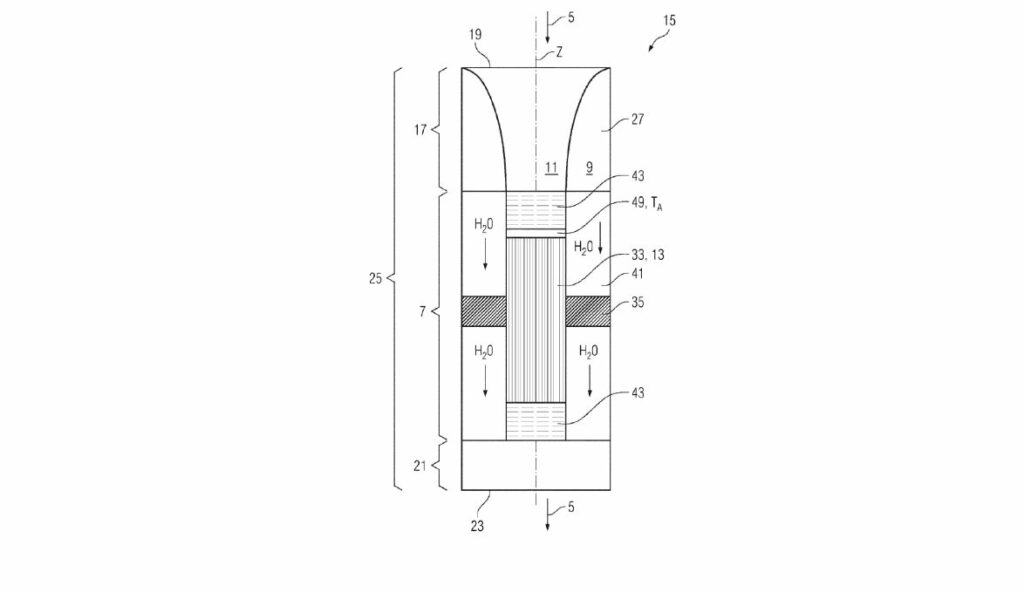A recent patent filed by Siemens Energy Global GmbH & Co. KG introduces innovative methods for operating an electrolysis system designed to produce hydrogen and oxygen. This patent not only addresses efficiency but also introduces techniques to improve the purity of the product gases.
Method for Electrolysis System Operation
The core of this patent focuses on methods to enhance an electrolysis system, which comprises an electrolyzer generating hydrogen and oxygen gas. The product gases are formed in a phase mixture, which contains both water and a respective product gas with some content of foreign gas. This process aims to optimize the conversion and purity of the hydrogen and oxygen produced.
Phase Separation via Rotation
One of the notable techniques outlined in the patent involves impressing a rotation upon at least one product gas flow. This mechanical intervention facilitates a phase separation of water from the product gas within the phase mixture. By doing so, it improves the purity levels of hydrogen and oxygen as the product gases are separated more effectively from the water phase.
Catalytically Active Zone
Another key feature of the patent is the introduction of a catalytically active zone in the electrolysis system. The product gas is guided through this zone, where the foreign gas is recombined with the product gas to form water. This step is significant as it ensures that any foreign gas present is converted back to water, thus enhancing the purity of the final gaseous products.
Reintegration of Product Gas
After passing through the catalytically active zone, the product gas—now freed from foreign gases—is mixed again with the liquid phase to form a new phase mixture. This reintegration is essential because it allows for continuous processing and recycling within the system, further optimizing efficiency and maintaining the consistency of the output gases.
The patent filed by Siemens Energy Global GmbH & Co. KG represents a thoughtful approach to electrolysis system operation, particularly in optimizing the purity and efficiency of hydrogen and oxygen production. While this patent does not claim to revolutionize the industry overnight, its innovative methods contribute to the evolving landscape of sustainable energy. Through improvements in phase separation and catalytic processing, this approach promises a more efficient pathway for generating clean fuel options.





